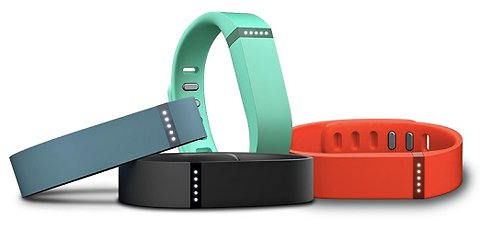So many innovative technological enablers are surfacing. Small size, low weight, superior battery power, and affordability stimulate new inventions in the realm of devices. They are devices that connect with our smartphones, PCs and tablets. In the area of health care, biometric devices and applications support our wellness objectives and medical needs with remote monitoring and feedback. We gained a new sense; we have smell, touch, taste, feel, hearing, and devices.
Biometric Devices
Simple things, such as checking your weight in the morning, transform into a full check-up by adding a pulse and blood pressure measurement. Immediate feedback from biometrics devices provides useful information on how well a person if doing compared to a goal. Smartphones are in a stage of transformation as well. Their initial job was a phone providing voice communications in the 90’s, then providing entertainment with an emerging new application around control and monitoring. Smartphones and biometric devices are becoming multipurpose smart appliances with a capability of connecting with and controlling other devices. Communications plays a significant role but instead of voice, data becomes the primary focus. A micro-network of devices forms an intelligent device ecosystem with primary, secondary and tertiary controllers. This has already started in home applications. I control my Smart TV and HVAC system remotely using embedded devices at home. I also monitor my body vitals as well using my smartphone as the primary controller for secondary devices such as a WIFI scale and blood pressure device. I also listen to music, manage my email and calendar, and take photos on my new smart appliance. It integrated into my lifestyle and health will play a more important part as new solutions become available.
Biometric devices provide a wide range of capabilities at an affordable consumer price point. For consumers, immediate feedback is provided along with trend information to monitor progress at a point in time and over a period. In a way, the data feedback becomes an incentive to continue or modify what the person is doing as well as show where my ideal parameters should be. It shows if I do this action, I get see this impact on my health which can impact my lifestyle. With the Bluetooth 4 specification, biometric devices have become as easy as plug and play and have become as ubiquitous as cell phones became in the late 1990’s.
The next step is to take the health measurements from other personal health biometric devices, such as those offered by Fitbit, Jawbone, Lark, Basis, or Nike +, that measure activity with accelerometers, sleep data, and heart rate, and aggregate the data into a personal health dashboard. Make it accessible by PC, smartphone, or tablet and you have enabled people to take control of their health through useful information. Useful information translates to better health decisions.
Health Monitoring device – The Fitbit Flex due for May 2013 release
Medical grade devices are also available supporting critical health care applications for health care providers. If you have a heart condition, AliveCor’s heart monitor device attaches to the back of a iPhone with 2 sensors to take ECG readings. Your doctor may prescribe a device and an app to so a care provider can monitor at-risk or post-surgery patients. While this usage is not a typical lifestyle scenario, it can perform a life-saving function while allowing patients to continue their normal activities while away from a hospital or doctor’s office. The solution conforms to the patient’s lifestyle instead of a lifestyle conforming to a procedure. Enabling a person to continue their lifestyle creates a positive experience while achieving consumer centricity.
Data
Devices create massive amounts of data and massive amounts of devices create big data. Payers are in a unique position to act as a hub and aggregate the data. Earlier attempts to accomplish this with PHR applications had limited success by Google and others. Payers can add additional value by integrating claims data. Together, member’s get access to real time and trending information supporting a member’s lifestyle and their journeys through medical events. With this data, payers can see trends to assess risks and offer advice to members and communities before medical events happen.
For example, if the data shows a location in the U.S., such as a group of zip codes outside of Philadelphia, in age groups 30-45, who are white and Hispanic males and they have an increased risk for obesity and diabetes, payers can deliver personalized communications with support programs to increase awareness and modify behaviors for healthier living. Biometric devices provide data that feed consumer applications to respond immediately to the consumer’s activity in support of a complete engagement program that notifies, encourages, and rewards healthy behaviors.
The payer diversifies their offerings into this new space to enhance member value and an area to build relationships for engagement and retention. Content and information can be the new product for payers as they expand their portfolio. This increases the payer’s relevancy, enhances member relationships and provides a unique and superior experience that touches all layers of the HealthScape.
What devices are connecting you and your health? What device would change your lifestyle?
It may appear that payers lose some control to consumers but in reality, they increase cost control through member enablement. Payers need to trust and empower members to do the right thing for their health but payers must provide relevant information and decision tools to arm the members.
